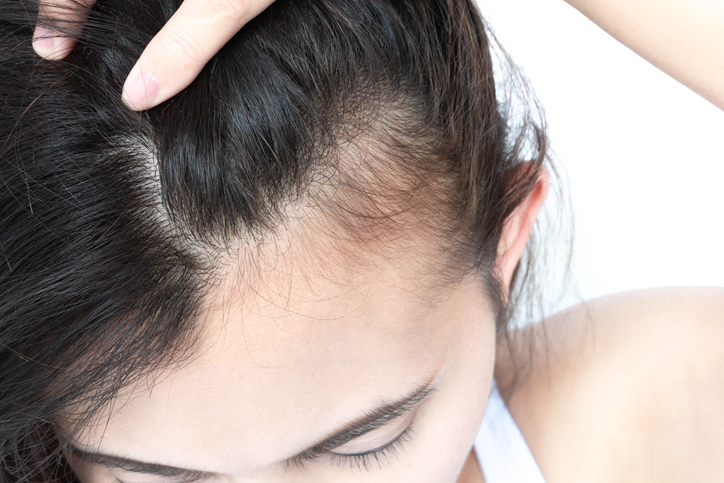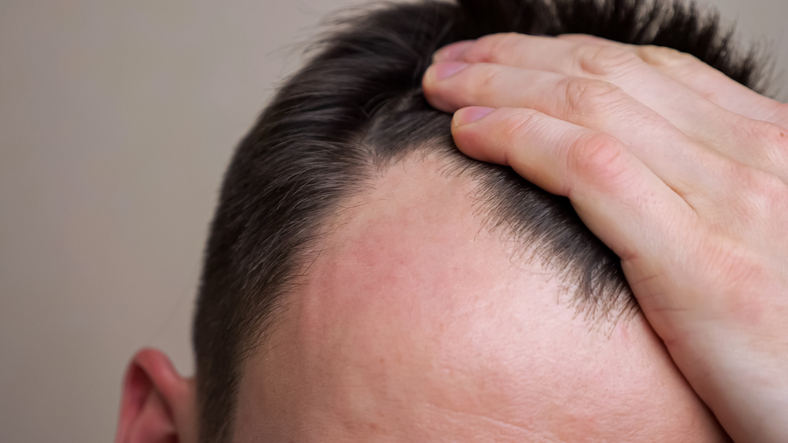Hair Diseases & Hair Disorders
Hair diseases and disorders are common, yet many people are unaware of the treatments available for them. At Desert Valley Dermatology, we treat a wide range of conditions directly relating to hair loss, helping patients slow the progress of hair diseases and restore their hair.
It’s normal to shed a few strands of hair each day, but if you notice more hair loss than usual, you must speak with a dermatologist. Hair loss can have a number of different causes, ranging from genetics to lifestyle factors, and the only way to determine the cause of your hair loss is to see a dermatologist.
Hair Loss Causes
Several factors are commonly associated with hair loss.

Genetics
If you have a family history of hair loss, you may also be more likely to experience it.
Stress
Stress can cause hair to become thin and brittle, leading to hair loss. Stress can be caused by physical or psychological factors, such as a traumatic life event, work or family pressure, or medical conditions.
Diet
A poor diet can lead to a lack of essential vitamins and minerals necessary for healthy hair growth. A diet of processed foods, such as fast food, or not getting enough protein can also lead to hair loss.
Hormones
Many hormones can influence the health of our hair, including dihydrotestosterone (DHT), thyroid hormones, and androgens.
DHT is a derivative of the male hormone testosterone and is the primary culprit in pattern baldness. DHT works by shrinking the hair follicles and interrupting the cycle of hair growth. This hormone tends to affect the front and top of the head, as these areas have more DHT-sensitive follicles.
Illnesses & Autoimmune Disorders
Certain illnesses like thyroid disease, lupus, and iron deficiency anemia can cause hair loss. Additionally, autoimmune diseases can cause the body’s immune system to attack the hair follicles, leading to hair loss.
Hair Styling
Over-styling the hair, such as with tight braids or using chemical treatments, can damage the hair follicles, leading to hair loss.
Types of Hair Loss
Hair loss can be symptomatic of numerous disorders, many treatable and even reversible.

Androgenetic Alopecia
Androgenetic Alopecia, commonly known as pattern baldness, is a form of progressive hair loss relating to a combination of inherited factors, hormones, and age. Men and women experience it.
In men, the pattern of baldness typically begins at the temples and moves forward to the crown. The hairline may remain intact in women, but thinning may occur at the part line. While there is no cure for androgenetic alopecia, treatment can help slow or stop hair loss progression.
Alopecia Areata
Alopecia Areata is an autoimmune condition causing patchy hair loss. While the exact cause of Alopecia Areata is unknown, research suggests it is an autoimmune disorder in which the body’s immune system mistakenly attacks the hair follicles. It can affect any area of the scalp and other areas of the body, such as the beard, eyebrows, and eyelashes.
Symptoms of this disorder often begin with one or more circular bald patches on the scalp. Sometimes, the hair may fall out in clumps, or the entire scalp may be affected.
Treatment for Alopecia Areata can vary depending on the severity of the condition and may include topical corticosteroids, intralesional corticosteroids, minoxidil, and immunomodulators.
Traction Alopecia
Traction alopecia is a form of hair loss caused by hair pulling or tension from styling. It is most commonly seen in people whose hairstyles include tight braids, ponytails, or other styles that pull on the hair for extended periods. Over time, this tension damages the hair follicles, leading to hair thinning or bald patches. The condition is usually only seen in certain areas, such as the front and sides of the scalp.
Treatment options include changing hairstyles, taking medication, and using topical treatments. If caught early, traction alopecia can be reversed. However, if left untreated, it can lead to permanent hair loss.
Telogen Effluvium
Telogen effluvium is a form of hair loss that can affect both men and women. It is caused by a disruption in the normal hair cycle, leading to premature hair shedding. Symptoms can include hair thinning and a decrease in hair volume. Physical and emotional stress are often contributing factors.
Treatment for telogen effluvium is typically focused on addressing the underlying cause of hair loss, such as reducing stress levels or correcting any underlying medical conditions.
Anagen Effluvium
Anagen Effluvium is a type of hair loss that occurs when the hair follicles are suddenly and dramatically impacted. It is most commonly caused when chemotherapy or radiation treatments damage the follicles, which prevents them from continuing to grow. Certain drugs, toxins, or diseases can also cause anagen effluvium. It typically presents as widespread shedding of hair all over the body but can also lead to complete baldness.
Hair loss due to anagen effluvium often occurs within two to four weeks of the damaging incident and can continue for up to six months after treatment has ended. Anagen Effluvium is usually reversible if the underlying cause is eliminated, but there is a risk that some of the hair loss will be permanent.
Hair Shaft Breakage
While hair shaft breakage is largely due to hair styling damage from mechanical manipulation (blow drying and heat styling) or chemical processing (coloring and straightening), it could be a symptom of an underlying medical disorder.
Significant health concerns, such as hypothyroidism, can sometimes cause unexplained hair breakage or brittleness. If you are experiencing brittle hair that doesn’t seem to have an external cause, you must have a medical evaluation to discover the hair disease and treatment.
Desert Valley Dermatology: Offering Effective Treatments for Hair Disorders
At Desert Valley Dermatology, we are dedicated to providing the best care possible for a broad spectrum of hair diseases. Contact us today to schedule an appointment and learn more about how we can help you.
